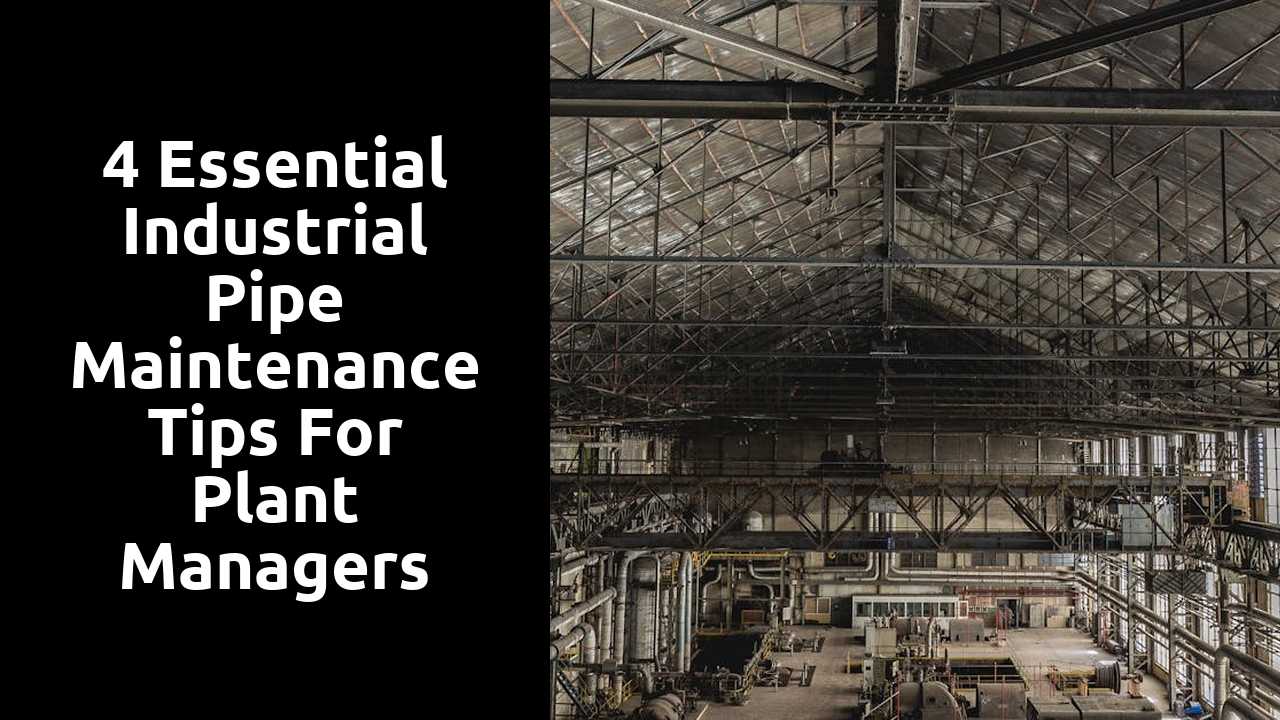4 Essential Industrial Pipe Maintenance Tips for Plant Managers

Table Of Contents
Importance of Record Keeping
Effective record keeping serves as the foundation for successful industrial pipe maintenance. Accurate documentation of maintenance activities enables plant managers to track performance over time. This practice facilitates the identification of recurring issues and potential areas for improvement. With organized records, teams can analyze trends and make informed decisions related to resource allocation and prioritization of tasks.
Moreover, maintaining a comprehensive history of inspections, repairs, and replacements aids in compliance with industry regulations. Regulatory bodies often require documentation to ensure adherence to safety standards. A well-structured record-keeping system not only enhances transparency during audits but also allows for quick retrieval of information when needed. This level of preparedness significantly supports operational efficiency and risk management strategies.
Tracking Maintenance History and Trends
Maintaining a comprehensive log of maintenance activities is vital for effective pipe management. This documentation serves as a reference point, enabling plant managers to assess the frequency and nature of past maintenance interventions. Detailed records can illuminate patterns, highlighting recurring issues that may indicate underlying problems with specific pipes or segments of the system. Tracking this history ensures informed decision-making by providing crucial insights into the long-term performance and reliability of the piping infrastructure.
Analyzing the recorded maintenance data allows managers to identify and address trends that may compromise operational efficiency. Regular evaluations of this information can reveal impacts from environmental factors or operational changes that necessitate adjustments in maintenance strategies. By implementing a proactive approach to maintenance history tracking, plant managers can transition from reactive problem-solving to anticipatory strategies. This shift not only optimizes resource allocation but also enhances overall system integrity and safety.
Evaluating Pipe Materials
Selecting appropriate pipe materials is critical for ensuring long-lasting performance in industrial applications. Various materials, including stainless steel, PVC, and copper, each possess unique properties that contribute to their suitability for specific environments. Factors such as temperature, pressure, and the type of fluids being transported significantly influence the decision-making process. Understanding the advantages and limitations of each material helps plant managers prevent costly failures and maintain operational efficiency.
Regular assessment of existing pipe materials is vital for identifying potential weaknesses and planning for replacements or upgrades. Environmental conditions, such as corrosion and wear due to abrasives, can impact material integrity over time. Conducting routine inspections allows for the early detection of issues and informs decisions on material selection for future installations. This proactive approach not only enhances the longevity of the pipe system but also maximizes the overall safety of plant operations.
Choosing the Right Materials for Longevity
Selecting the appropriate materials for industrial piping systems significantly impacts their durability and overall performance. Factors such as the operating environment, pressure, and temperature should guide material selection. Additionally, resistance to corrosion and wear can contribute to extended service life and reduced maintenance costs. Understanding the specific requirements of the application allows managers to make informed decisions that enhance the longevity of the piping systems.
Materials such as stainless steel, PVC, and carbon steel each serve distinct purposes and exhibit unique attributes. Stainless steel is known for its exceptional corrosion resistance, making it ideal for chemical processes. Conversely, PVC is lightweight and affordable, best suited for non-pressurized applications. Evaluating these options based on the specific needs of the plant ensures that the chosen materials will withstand operational demands while minimizing unexpected failures and the associated downtime.
Implementing a Routine Maintenance Schedule
Establishing a routine maintenance schedule is crucial for the long-term efficiency and reliability of industrial piping systems. This proactive approach allows plant managers to identify potential issues before they escalate into costly emergencies. Regular inspections and service intervals create an opportunity to assess the condition of pipes, fittings, and connections. This leads to informed decisions regarding repairs or replacements, ultimately minimizing downtime and ensuring the smooth operation of plant processes.
Consistency in maintenance practices fosters a culture of accountability among staff. When everyone understands the importance of adhering to a maintenance schedule, it promotes a shared responsibility for the overall functionality of the plant. Training personnel on specific maintenance tasks and the significance of timely interventions can further enhance performance. Ultimately, a well-structured routine not only safeguards the integrity of piping systems but also contributes to operational efficiency and safety standards.
Benefits of Consistent Maintenance Practices
Routine maintenance enhances the reliability of industrial piping systems, ensuring they function optimally over time. This regular attention reduces the risk of unexpected failures, minimizes downtime, and ultimately contributes to increased productivity and efficiency. By adhering to a well-established maintenance schedule, plant managers can identify potential issues early, allowing for timely interventions. This proactive approach helps in preserving the integrity of the entire piping infrastructure.
Establishing consistent maintenance practices also plays a crucial role in safety and compliance. Regular inspections and servicing ensure that all systems meet regulatory standards, thus mitigating risks associated with leaks, spills, or other hazardous incidents. A well-maintained system fosters a safer work environment for employees and protects the company from legal liabilities related to non-compliance. Additionally, it often results in cost savings over the long term, as proper upkeep can extend the life of the pipes and reduce the need for costly replacements.
- Ensures optimal performance of industrial piping systems.
- Reduces the likelihood of unexpected equipment failures.
- Decreases downtime and enhances overall productivity.
- Facilitates early identification of potential issues.
- Improves workplace safety and fosters compliance with regulations.
- Minimizes legal liabilities associated with non-compliance.
- Results in long-term cost savings through extended equipment life.